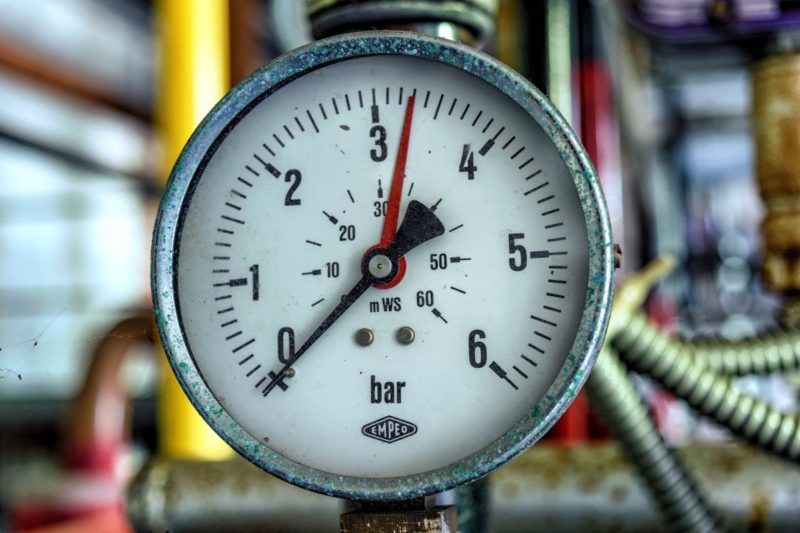Do you know how water heater thermostat works? This is the right place to learn about the water heater thermostat. A thermostat controls the heating components of an electric-powered water heater.
Two parts and two thermostats are commonly seen in electric-powered hot water tanks. The parts would not heat up in unison. The water is heated first by the top element and then the bottom piece.
In between two components, the top thermostat works as a controller. The bottom thermostat is activated whenever the water in the upper half of the reservoir is heated quite so. Its lower thermostat activates the lower element whenever it detects that the water has become too cold. That after the top part has completed heating, this will happen. Let’s get into the deep to discover more amazing facts.
What Does Water Heater Thermostat Do?
For most water heaters, the top thermostat is the primary control component. Both the top and bottom parts are under its control. The thermostat is a sensor that is actuated by temperature. In reaction to this “request for heat,” the thermostat will ignite one of the components when the water temperature falls below the prescribed level. A thermostat’s method of sensing water temperature is unusual in that it never makes direct contact with water. The thermostat’s backside perceives the temperature of a tank’s outermost surface. It’s placed firmly against that and secured with a clip.
This metal-to-metal contact transports warmth from the water to the thermostat through conduction through the tank’s exterior. Excluding the two locations where the thermostats were installed, the rest of the tank is completely insulated. Many electrical water heaters with more than 25 gallons include two thermostats, one for the top and one for the bottom of the water heater tank. The top thermostat is in charge and would always give orders to the lower thermostat.
How A Water Heater Thermostat Works?
When you just use hot water early, you draw water from the tank’s top. A heater concurrently loads with ice water as the warm water is supplied. A lower thermostat detects a temperature drop first because the water is sent to the bottom of the water heater tank via the dipping tube. It sends a signal to the top electrical water heater thermostat, which will activate the bottom element as long as the top half of the tank remains hot. The components are usually powered one at a time in most residential apartments. A lower thermostat may accomplish the job if you simply need a few liters of hot water.
Nevertheless, if you have difficulty waking up and requiring a long bath, or when there is a queue outside of the toilet door, you may wind up using up all of the remaining warm water in the tank.
This might occur, and whether or not the higher element is involved. Whenever the water inside the upper section of the tank starts to cool, the higher thermostat kicks in to keep the departing water at a comfortable temperature for the following user. The “first-hour rating” is assigned to a tank-type water heater. That rating usually is 20-30 percent higher than the tank’s storage space. Because the elements have gotten activated, the heater will start producing extra hot water immediately as they detect a dip in temperature.
A 50-gallon tank could produce over 60 gallons of heated water in one hour. After understanding how water heater thermostat works, it is essential to know about temperature settings on the water heater so keep reading. You may also be interested to know how to test a water heater thermostat.
Temperature Setting On Water Heater Thermostat
Various brands and types of water heaters have comparable temperature ranges. It usually ranges between 120 and 145 degrees Fahrenheit. The temperature of the units is pre-set to 125-130 degrees Fahrenheit before they are supplied to the client. It is a secure and energy-efficient option that safeguards consumers from scorching water, particularly children and the elderly. It’s vital to understand that when exposed to extreme heat water at 125 degrees Fahrenheit, it requires more than five min to generate burns, or less than 40 seconds at 135 degrees Fahrenheit, and less than a moment at 150 degrees Fahrenheit. Follow the below instructions to modify the temperature setting on the electric-powered water heater.
Changing the thermostat on a hot water system is simple, but you must do so only when the switch is switched off. Turn off the water heater’s electricity at the fuse box’s main switch or the standard circuit breaker. To make room for the controls, detach the access panel and lid, and slide the insulation aside. Set the knob to the appropriate position with the wrench. Return the top, access panel, or insulation to their original positions, then switch on the water heater’s power.
There are only a few things you can do to keep yourself and others safe from injuries. One method is to install a temperature limiting valve that connects to taps to restrict hot water flow or a blending valve to lower the hot temperature of the water by combining hot and cold water.
It’s A Wrap!
We are glad to know that you have learned how water heater thermostat works. The water heater thermostat is responsible for the water temperature, but installing a temperature monitor sensor is better to avoid any injury. Click on these links to read related articles; know how to clean electric water heater and what causes water heater to leak. Thank you, friends, for staying with us.

